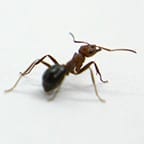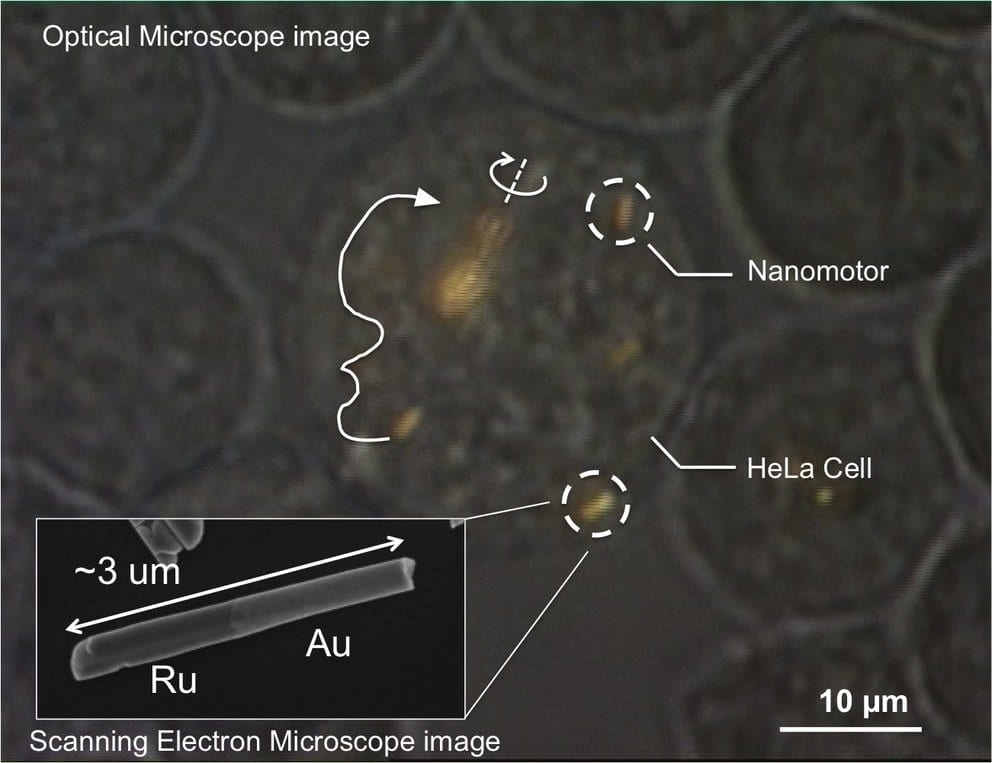
Ants can lift up to 5,000 times their own body weight, new study suggests
High hopes may help move a rubber tree plant (as the old song goes), but the real secret to the ant’s legendary strength may lie in its tiny neck joint.
In the Journal of Biomechanics, researchers report that the neck joint of a common American field ant can withstand pressures up to 5,000 times the ant’s weight.
“Ants are impressive mechanical systems—astounding, really,” said Carlos Castro, assistant professor of mechanical and aerospace engineering at The Ohio State University. “Before we started, we made a somewhat conservative estimate that they might withstand 1,000 times their weight, and it turned out to be much more.”
The engineers are studying whether similar joints might enable future robots to mimic the ant’s weight-lifting ability on earth and in space.
Other researchers have long observed ants in the field and guessed that they could hoist a hundred times their body weight or more, judging by the payload of leaves or prey that they carried. Castro and his colleagues took a different approach.
They took the ants apart.
“As you would in any engineering system, if you want to understand how something works, you take it apart,” he said. “That may sound kind of cruel in this case, but we did anesthetize them first.”
The engineers examined the Allegheny mound ant (Formica exsectoides) as if it were a device that they wanted to reverse-engineer: they tested its moving parts and the materials it is made of.
They chose this particular species because it’s common in the eastern United States and could easily be obtained from the university insectary. It’s an average field ant that is not particularly known for it’s lifting ability.
They imaged ants with electron microscopy and X-rayed them with micro-computed tomography(micro-CT) machines. They placed the ants in a refrigerator to anesthetize them, then glued them face-down in a specially designed centrifuge to measure the force necessary to deform the neck and eventually rupture the head from the body.
The centrifuge worked on the same principle as a common carnival ride called “the rotor.” In the rotor, a circular room spins until centrifugal force pins people to the wall and the floor drops out. In the case of the ants, their heads were glued in place on the floor of the centrifuge, so that as it spun, the ants’ bodies would be pulled outward until their necks ruptured.
The centrifuge spun up to hundreds of rotations per second, each increase in speed exerting more outward force on the ant. At forces corresponding to 350 times the ants’ body weight, the neck joint began to stretch and the body lengthened. The ants’ necks ruptured at forces of 3,400-5,000 times their average body weight.
Micro-CT scans revealed the soft tissue structure of the neck and its connection to the hard exoskeleton of the head and body. Electron microscopy images revealed that each part of the head-neck-chest joint was covered in a different texture, with structures that looked like bumps or hairs extending from different locations.
“Other insects have similar micro-scale structures, and we think that they might play some kind of mechanical role,” Castro said. “They might regulate the way that the soft tissue and hard exoskeleton come together, to minimize stress and optimize mechanical function. They might create friction, or brace one moving part against the other.”
Another key feature of the design seems to be the interface between the soft material of the neck and the hard material of the head. Such transitions usually create large stress concentrations, but ants have a graded and gradual transition between materials that gives enhanced performance—another design feature that could prove useful in man-made designs.
“Now that we understand the limits of what this particular ant can withstand and how it behaves mechanically when it’s carrying a load, we want to understand how it moves. How does it hold its head? What changes when the ant carries loads in different directions?”
One day, this research could lead to micro-sized robots that combine soft and hard parts, as the ant’s body does. Much work in robotics today involves assembling small, autonomous devices that can work together.
The Latest on: Robot design
[google_news title=”” keyword=”Robot design” num_posts=”10″ blurb_length=”0″ show_thumb=”left”]
via Google News
The Latest on: Robot design
- Entrenched in Robotics: An On-the-Go Conversation with Jan Henneckeon May 1, 2024 at 10:41 am
In this impromptu interview, Jan Hennecke, a robotics product manager at igus, defines “value creation” as he works the robotics tradeshow circuit.
- Microsoft taps Sanctuary AI for general-purpose robot researchon May 1, 2024 at 9:00 am
Microsoft, it seems, is hedging its bets when it comes to general-purpose robotics AI. Today, the tech giant announced a collaboration with Figure competitor Sanctuary AI, best known for its humanoid ...
- A Roundup of New Robotson May 1, 2024 at 6:16 am
The cups are available in four diameters, from 40 to 100 millimeters, and three mounting configurations (3/8G male or female and 32 millimeter square). All are made from thermoplastic polyurethane for ...
- Vention Launches New Cloud-Robotic and AI Capabilities to Accelerate the Design and Deployment of Robot Cellson May 1, 2024 at 4:55 am
Vention, the cloud robotics company, released today a suite of AI-powered capabilities to its Manufacturing Automation Platform (MAP). These new capabilities, available immediately to the more than 4, ...
- Whisker Litter-Robot 4 Review: Yes, It’s Worth the $700 Price Tagon April 30, 2024 at 11:04 pm
But the original model wasn’t perfect, and some reviewers didn’t think it warranted the price tag. Enter the Litter Robot 4, the new and improved Litter Robot, with a streamlined design, quieter run ...
- InOrbit Launches RobOps Copilot for AI-Powered Robot Fleetson April 30, 2024 at 5:00 pm
He started with Design News in 2002 as a freelancer and hired on full-time in 2011. He covers automation, manufacturing, 3D printing, robotics, AI, and more. Before covering technology, Rob spent 10 ...
- Festo unveils miniature robot bees that can navigate swarm flighton April 30, 2024 at 8:46 am
Festo, renowned for its bionic innovations, reveals ultra-light robotic bees that are capable of autonomous swarm flight.
- Robots can't outrun animals. A new study explores whyon April 30, 2024 at 4:25 am
The question may be the 21st century's version of the fable of the tortoise and the hare: Who would win in a foot race between a robot and an animal?
- The shape-shifting underwater robot pioneering the depths of the seaon April 30, 2024 at 3:00 am
HERO-BLUE is a proof-of-concept robot, measuring 31.5 inches by 23.6 inches by 11.8 inches and weighing 24.9 pounds. It’s remotely controlled, but with its stereoscopic vision, the future could see ...
- Engineers design spider-like robot that may be used to explore caves on Marson April 18, 2024 at 5:59 am
A team of roboticists and mechanical and aeronautical engineers at Stanford University has developed a spider-like robot for possible use in exploring caves or lava tubes on Mars. In their paper ...
via Bing News









